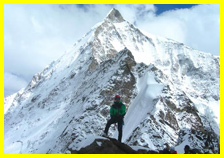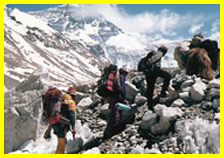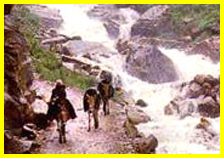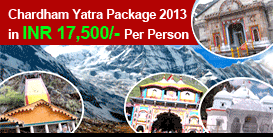
Uttarakhand Packages
Uttarakhand Mountainerring Tour
If you're fired by the spirit of adventure, let the sparks in your heart fly...... in India, a land blessed with lofty snow-clad peaks, crystal glaciers, rolling meadows, jagged rock faces, verdant valleys, meandering rivers, cascading waterfalls, dense forests, and hospitable people, blessed with a rich culture - a land perfect for mountaineering, trekking, and rock climbing. Mountaineering as a sport has a history as old as the history of the evolution of human race itself. Mountaineering started when the need was felt for people who could climb difficult heights and terrains to meet people across the border, to trade, or to conquer new territories. In the course of time, man developed new modes of transportation and communication and venturing out on these difficult routes were not needed. Nevertheless, what remained was his nature to take risks and getting pleasure in conquering something totally unknown and unexplored. This inner urge to take up challenges has led man to do things that are quite daring.



This zeal of adventurism found its ultimate fruition in the Himalayas-lofty, extremely difficult to conquer, and challenging enough to send a man back to his mother's womb. But, being men, these challenges were accepted and there began a tussle between men's ambitions and nature's reluctance. New heights were conquered, new routes were discovered, many lives lost, but the mission was accomplished. Today, almost all the major peaks are conquered and even general people have started taking mountaineering as a serious hobby.
SEASON :
While the mountaineering season tends to be concentrated around the April-November period, a number of climbs are also attempted in winter (December-March) which, though much colder, allows for clearer climbing days.
CATEGORIES :
Mountaineering routes are graded, according to the degree of difficulty and accessibility. Prior medical examination is essential. The permanent snowline, generally being in the region of 5,200 m, the degree of difficulty of mountaineering routes, can broadly be defined as :
Moderate:
Requiring knowledge of basic mountaineering techniques, such as those imparted by the Nehru Institute of Mountaineering at Uttarkashi, the Himalayan Mountaineering Institute at Darjeeling, and the Western Himalayan Institute of Mountaineering at Manali.
Advanced :
For this category of peaks, it is necessary to be in top physical condition, and to possess advanced mountaineering skills, either through the advanced courses of mountaineering institutes, or through expedition experience. Within this category, further demarcation is possible, till the highest degrees of difficulty.
LOCALES :
The main mountaineering locales, are in the Garhwal and Kumaon regions of Uttarakhand. In Garhwal, the areas, include the Tons-Banderpunch region, the Gangotri glacier system, the Nanda Devi sanctuary (presently closed), Arwa glacier area, Kamet and Abi Gamin. The roadheads for these at Taluka, Gangotri, Joshimath, and Malari, can be reached in two or three days from Delhi. In Kumaon, the areas include the Kalabaland glacier system, the Panch Chulhi, Rajrambha, and Chaudhara peaks, and the peaks of the Nandakot basin, on the eastern flank of the Nanda Devi sanctuary.
EQUIPMENT :
Equipment can be hired, either from clubs, or purchased from one of the agencies selling it. Prior to setting out, all equipment must be tested, and team members must familiarize themselves with its use. Kerosene must be carried, so that the fragile mountain environment is not further degraded, by cutting any wood. The Garhwal Mandal Vikas Nigam has a full-fledged mountaineering and trekking division, based at Muni-ki-Reti, Rishikesh.
PERMITS :
For information about Peak booking fees, Inner Line restrictions, import of equipment, camera permits, insurance, medical attention, and evacuation procedures, contact the Indian Mountaineering Foundation based at Delhi. This is the national apex coordinating body for the sport in India.
IMPORTANT :
All expeditions, whether Indian, foreign, or joint, are required to apply to the IMF, at least six months prior to departure, so that all the formalities are completed within the time frame. Leaders of returning expeditions, are required to submit reports, and adequate proof of the climbs, to the IMF. While Indian nationals and IMF sponsored joint expeditions, can attempt peaks beyond the 'Inner Line', foreign nationals are as a rule not permitted to do so. Additionally, all expeditions by foreign nationals, are required to be accompanied by an Indian liaison officer at their cost.
























